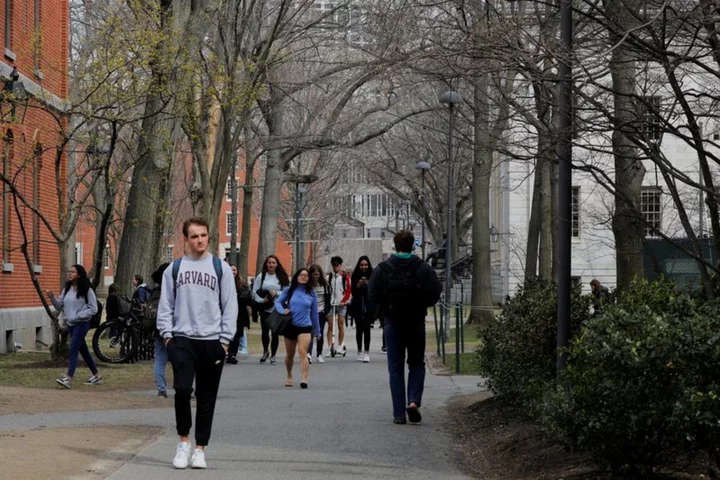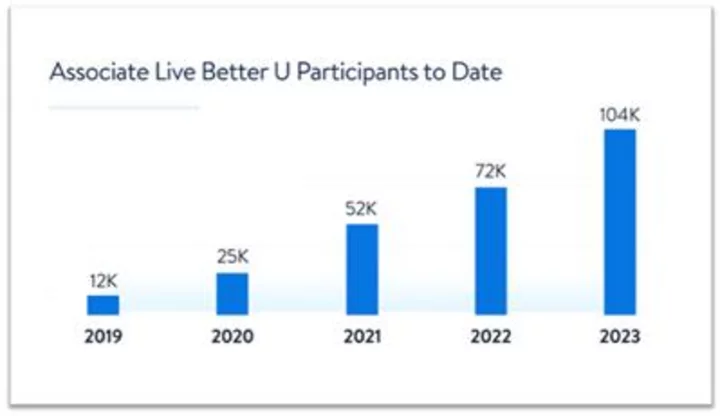Saying goodbye to your family and going off to college for the first time is an extremely daunting and intimidating experience — even more so if you’re the first person in your family to do so and are trying to navigate an academic system that wasn’t made with you in mind. For Latine students across the US, Hispanic-serving institutions (HSIs) might help bridge the cultural gap that emerges between Latine students entering higher education and institutions that have historically excluded non-white students.
Hispanic-serving institutions are defined by federal law as an accredited, degree-granting, public or private nonprofit institution of higher education with 25% or more total undergraduate Hispanic or Latino full-time equivalent student enrollment. Once an HSI is officially accredited by the federal government, that institution is allowed to apply for HSI-specific grants. But the accreditation is only the first step of the work to make an institution to serve Latine students.
“I would call [an institution that enrolls 25% or more Hispanic students] a Hispanic-enrolling institution, not a Hispanic-serving institution,” Dr. Marielena DeSanctis, president of the Community College of Denver, an institution that got accredited as an HSI in 2021, tells Refinery29 Somos. “Because enrolling students is one thing and serving them is something completely different.”
Unlike HBCUs (historically Black colleges and universities), which were founded with the purpose of serving Black American students, HSIs were not originally founded with the goal of serving Latines; instead, institutions become HSIs through enrollment and federal accreditation. While the federal accreditation of HSIs leads to more access to institutional grants, the “Hispanic-serving” part of the title is really up to the interpretation of the institution holding the title of HSI. Going to an HSI accredited school doesn’t necessarily mean you will study on a campus that is welcoming to Latine students, and some institutions are more invested in inclusion than others.
“I would call [an institution that enrolls 25% or more Hispanic students] a Hispanic-enrolling institution, not a Hispanic-serving institution, because enrolling students is one thing and serving them is something completely different.”
Dr. Marielena DeSanctisFor Dr. DeSanctis, who speaks on behalf of Community College of Denver’s approach to the accreditation, communicating with students and making sure that they’re able to navigate the knowledge experience is key. “Here, we really leaned into the role of family when a student who is Latine comes to us, and we provide a whole lot of opportunities for the family,” Dr. DeSanctis says. “This last Saturday, we had our summer social where we invited families and new students, and we gave them opportunities for parents to ask questions completely in Spanish. Whatever they want to ask, we give them tips on how they can best support their students through this journey.” This kind of event seems more than necessary when more than 44% of Latine students are the first in their family to attend college, and parents don’t know how to navigate academic institutions, especially not in their second language.
Elaine Townsend Utin, co-founder and executive director of LatinxEd, an initiative that supports immigrant Latine families through their higher education experience, says that HSIs play a critical role in Latine student attainment rates, and that HSIs that do a good job at serving the needs of their Latine student body see increased academic outcomes among their Latine populations, as well as higher rates of STEM degree completions and better labor market outcomes.
“And there’s even more profound non-academic outcomes, such as increased leadership and racial identity development, as well as increased civic engagement and critical consciousness,” Utin tells Somos. “It’s really critical for our students, our community, to be able to have that experience on campus that shows that they belong, that validates them positively. But really, at the end of the day, it means that your culture matters and we value it here on campus.”
At the University of Central Florida, which got federally recognized as an HSI in 2019, Cyndia Morales Muñiz says the school approaches their accreditation with the intention to make their students feel included and like they belong in its academic space. “Our students are often surrounded by visual cues that they belong here,” Dr. Muñiz tells Somos. “A very simple example of this is our shuttle buses that we have for students who live in student housing nearby. The buses say “¡Vamos, Knights!” and “Orgullosamente Sirviendo La Comunidad Latina,” so here, students have the opportunity to see themselves, to see their culture, to get these cues that this is also their place.” Dr. Muñiz emphasized that UCF is also interested in making their faculty and graduate programs more diverse so students can see themselves in the classroom. She currently also sits on the advisory board for UCF’s Puerto Rico Research Hub, a center expanding research on and student engagement with the Puerto Rican diaspora in Central Florida.
For Dr. Muñiz, a key point has been to focus on the needs of Latine students as well as what Latine students can bring to the institution they attend. “There are strong cultural assets that our Latino students also bring with them to the classroom that are also responsible for their success,” Dr. Muñiz adds.
“HSIs need to make culturally sensitive and flexible environments for all Latine students, work at hiring more faculty and staff that mirror the students they represent, and create more programs to help educate parents and guardians about college.”
Estrella SerratoEstrella Serrato, a Latina college and postgraduate coach who hosts the podcast Cafecito con Estrellita, where she guides first-gen scholars through higher education paths, cites many issues Latine students are burdened with: a higher probability of being from a low-income family, the intimidation that comes with not having parents who went to college and who can’t really help you navigate academia, and the isolation Latine people feel at predominantly non-Latine white institutions, to name a few. Serrato, who studied at two HSIs — University of California, Santa Barbara and California State University, Stanislaus — says these institutions shed light on these issues, but need to continue to do better.
“I feel that my previous universities could have done better in regards to providing support to incoming freshman and transfer Latine students,” Serrato says. “As a first-generation graduate myself, I experienced a lack of direction and limited financial and emotional support, in regards to my higher education journey. Because I had little to no guidance while entering these big universities, I felt isolated, and it took me over a year to finally learn about resources, clubs, and scholarships that are catered toward students like me. If I had known about these levels of support, I probably wouldn’t have fallen onto academic probation my first quarter, nor felt as discouraged as I did, when I first started.”
In a conversation with her Instagram followers and podcast listeners, who are mostly first-generation Latine students, Serrato asked how HSIs could better accommodate the needs of Latine scholars. “My followers suggested that HSIs need to make culturally sensitive and flexible environments for all Latine students, work at hiring more faculty and staff that mirror the students they represent, and create more programs to help educate parents and guardians about college,” she says.
It’s important that incoming Latine college students, or high schoolers seeking to apply to HSIs, do their due diligence when researching potential colleges and courses. Utin advises Latine young adults to do a deep-dive into the schools they’re interested in and try to understand what support systems are in place there before they accept any offers.
“HSIs are a fairly new brand,” Utin says. “So folks are still learning what that brand means. I think for students who are entering institutions that are HSIs, it’s important to research and see what each institution is offering when it comes to student support. It’s always really helpful to attend an institution or university that is actively seeking to take care of you, because it’s going to be a hard journey. It was for me as a first-generation college student, and being able to identify where those unique support programs are is really helpful in making your decision on where to go and where to invest your money and your time.”
“Considering how Latines are often kept out of college because of their economic status and the high debt rates that come with higher education, choosing the right college is about more than just academics — it’s about finding a space where students of various racial and ethnic backgrounds can feel comfortable and be respected.”
nicole froioConsidering how Latines are often kept out of college because of their economic status and the high debt rates that come with higher education, choosing the right college is about more than just academics — it’s about finding a space where students of various racial and ethnic backgrounds can feel comfortable and be respected. Potential Latine college students have to keep in mind that their experiences and cultures matter, and be prepared to ask specifically about each HSI’s policies and programs and sense how they feel on campus.
“Wherever they end up going, hold those institutions accountable for helping them in ways that make sense, that resonate with them, that are relevant to them,” Dr. Muñiz adds. “Hopefully, if you’re at an HSI, then you have an institution that really creates these intentional spaces and intentional opportunities that are open to all students, but strategically designed with Latino students in mind. You deserve to be at an institution that acknowledges and celebrates and leverages your cultural assets to achieve your academic and your career outcomes.”









